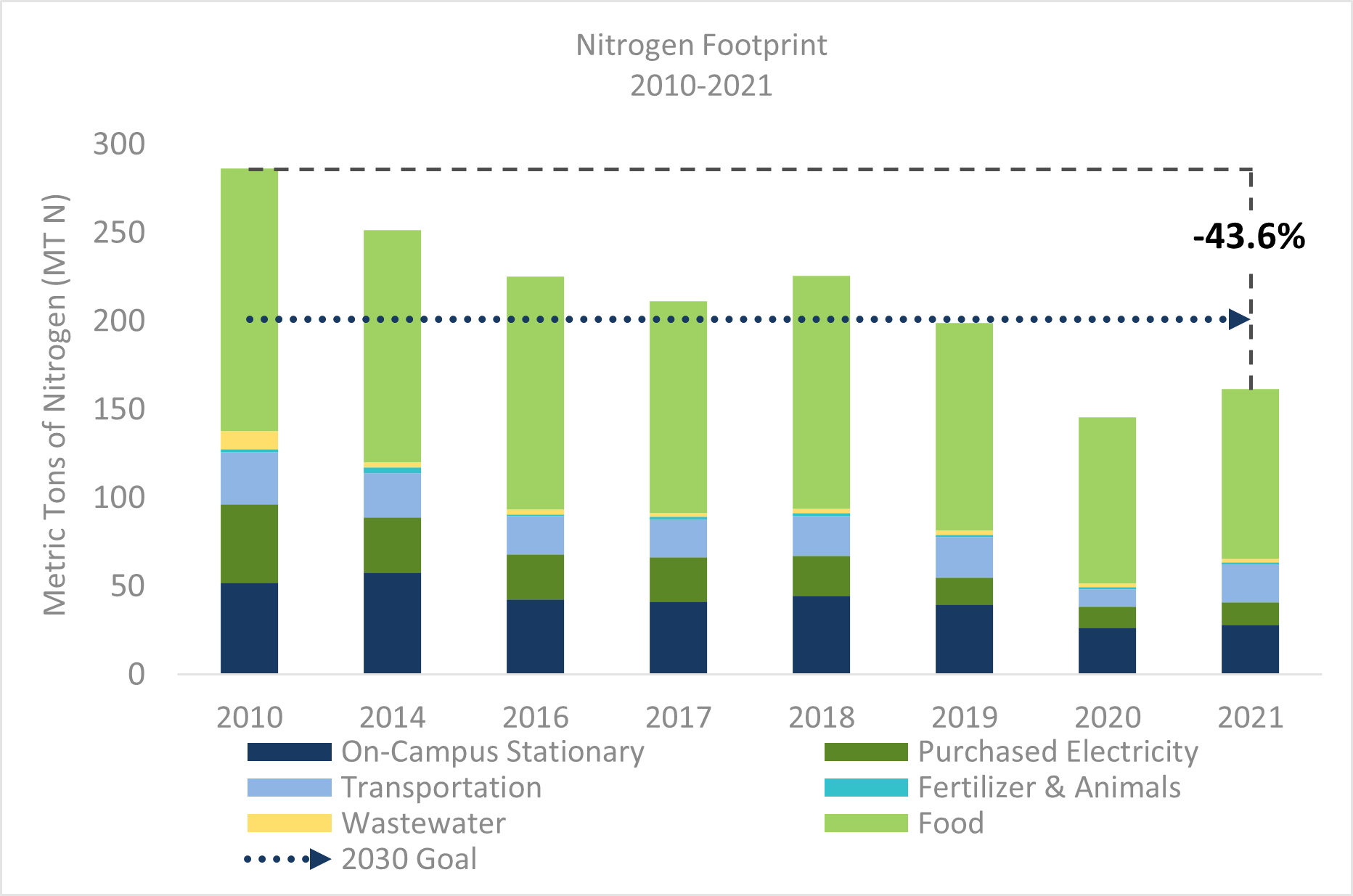Nitrogen
UVA's goal is to reduce nitrogen emissions by 30% relative to 2010 levels by 2030.
UVA is home to leading-edge nitrogen research that looks at impacts, causes and reduction strategies for reactive nitrogen.
While most nitrogen in the atmosphere exists as inert gas, reactive nitrogen is found in many forms that contribute to environmental and human health issues, including algae blooms, ozone depletion, forest dieback and respiratory illness. Reactive nitrogen is a common byproduct of three important processes: energy combustion, food production and wastewater treatment.
In 2013, UVA became the first university in the nation to set an official reduction goal -- reduce by 25% below 2010 levels by 2025 and became the first university in the world to release a Nitrogen Action Plan setting forth a roadmap to meet this goal.
The Nitrogen Working Group is working to create an updated action plan outlining steps the University will take to reach the new 30% by 2030 goal. which was set as part of UVA's 2020-2030 Sustainable Plan.

